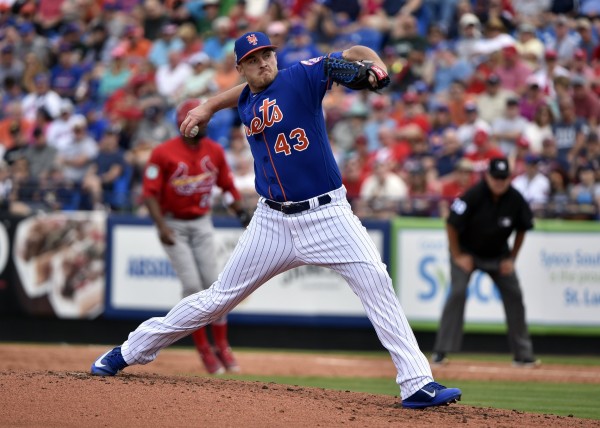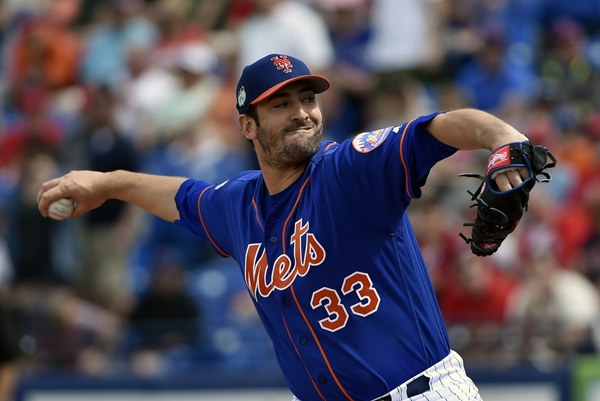
New York Mets reliever Addison Reed is coming off an amazing 2016 season in which he posted a 1.97 ERA, 1.97 FIP, 10.55 K/9, and a 2.6 fWAR.
The number that really jumps out is the 1.97 FIP. FIP is Fielder Independent Pitching, which is a good ERA indicator. It factors in hard hit rates, batting average of balls in play, and strikeout rates among other statistics to help metrics whether a pitcher is lucky or whether he is as dominant as his ERA says he is.
A solid example from the 2016 season is Noah Syndergaard vs Kyle Hendricks. Hendricks had a 2.13 ERA but a 3.20 FIP while Syndergaard put up a 2.60 ERA and a 2.29 FIP. Their FIP’s would indicate Hendricks is due for a regression while Syndergaard could have an even better ERA. Reed’s 1.97 FIP shows he was as dominant as his 1.97 ERA would indicate.
You might wonder why anyone would be curious about his 2016 season, it was as good as any in Mets history for a reliever. Here is the answer: it’s more a question of how he was so good rather than why he was so good. Okay not the best answer but not to worry, I shall elaborate with numbers.
Reed’s 1.97 FIP was good for 6th best in baseball, the 5 guys in front of him were: Aroldis Chapman (1.42), Kenley Jansen (1.44), Andrew Miller (1.68), Dellin Betances (1.78), and Zach Britton (1.94). A few things should appear pretty common about these guys just by looking at their names.
First off, the Yankees bullpen in the first half of 2016 was insanely great. Second, 4 out of the 5 guys who were in front of Reed had a K/9 of 13.6 or higher. The only guy who did not was Zach Britton but he had a groundball rate of 80%. Third, all these guys have some serious velocity. Reed had K/9 of 10.55, a groundball rate of 39.5%, and only averaged 92.4 MPH on his fastball. Of course, this is coming from a guy who can barely touch 45 MPH.
How did he put up such a good season without the elite strikeout numbers and with a mediocre groundball percentage? The main reason is his undaunting ability to throw strikes early and often. Reed threw a first pitch strike 70.1% of the time. That metric had him tied for 2nd among all relievers when it came to getting ahead 0-1. Reed also finished 2nd by throwing 52.9% of his pitches in the zone.
The next thing about Reed was his penchant for being ahead in the count. Reed was ahead in the count 36.21% of the time. He was 2nd in baseball among all pitchers who threw a minimum of 1000 pitches. He even finished ahead of some guys named Andrew Miller, Max Scherzer, and Clayton Kershaw.
Reed is adept at mixing pitches, commanding the zone, and keeping guys off balance. Another way to phrase it, he knows how to “pitch.” I really don’t have a stat for this one, I am sorry for letting all of you down. Reed is fearless on the mound, especially when it comes to throwing his fastball.
Reed threw pitches down the heart of the plate about 27.16% of the time per the Shiny App which tracks pitches to different parts of the strike zone. Among pitchers who have thrown 600 pitches, Reed ranked 2nd in that metric. The guy who finished in front of him was Yusmeiro Petit. Safe to say those two had wildly different levels of success this past season. Reed was an invaluable member of the 2016 Mets and will likely have a decent sized stint as the closer.

Initially, this was supposed to be the form of a player projection using numbers and metrics outside of the commonly used sabermetrics.
However, it turned it to much more after the recent news about Matt Harvey. Harvey and Mets pitching coach, Dan Warthen, admitted Harvey will still need some time to fully regain his velocity. Harvey appeared to embrace the challenge and has seemed very mature throughout this whole situation. Harvey and Warthen seem confident in Matt’s ability to “pitch.”
Reed should serve as a reminder to fans that Harvey can still be a dominant pitcher without the elite velocity and luck. Harvey will have to face hitters multiple times a game unlike Reed but that really shouldn’t matter too much.
In today’s game, in-depth information is readily available. It’s very difficult for relievers to dominate by having a pattern regardless of how hard they throw. I found almost every pitch thrown by Reed to every hitter he faced. I can only imagine what scouts and MLB teams have on players.
I hope this article will ease your mind about Matt Harvey while also exciting you about Addison Reed. Reed can replicate his 2016 season as long as he does not fall back into the bad tendencies of his Arizona days. I have total faith in Harvey and I am very impressed by his growth as a pitcher to admit he’s fully ready to accept this new challenge. Thanks for reading and Let’s Go Mets!














